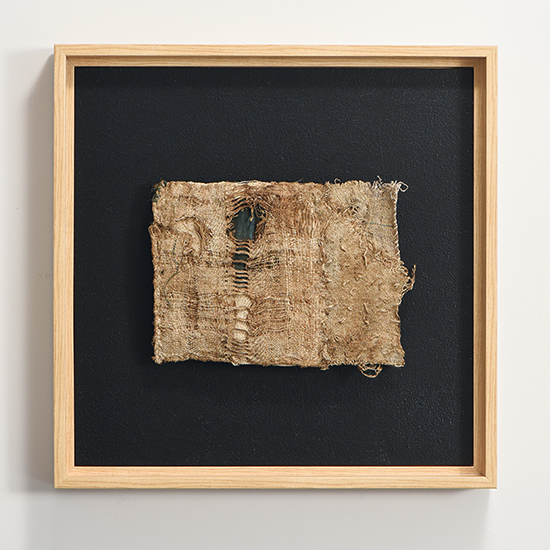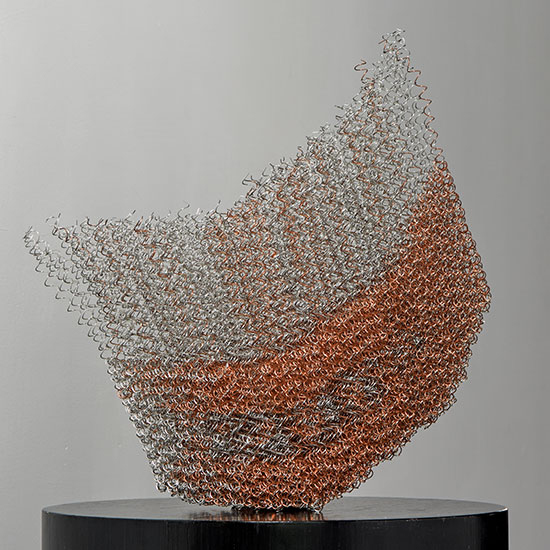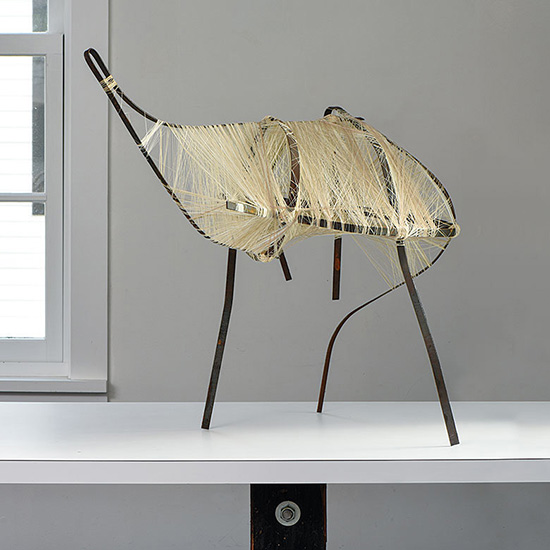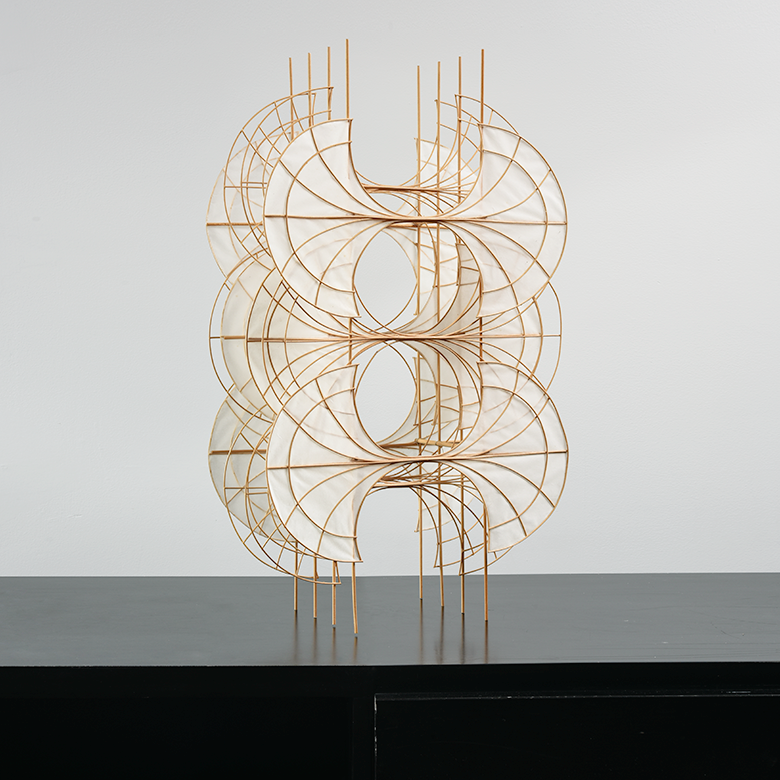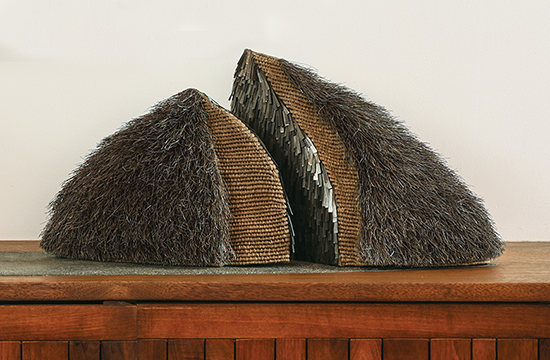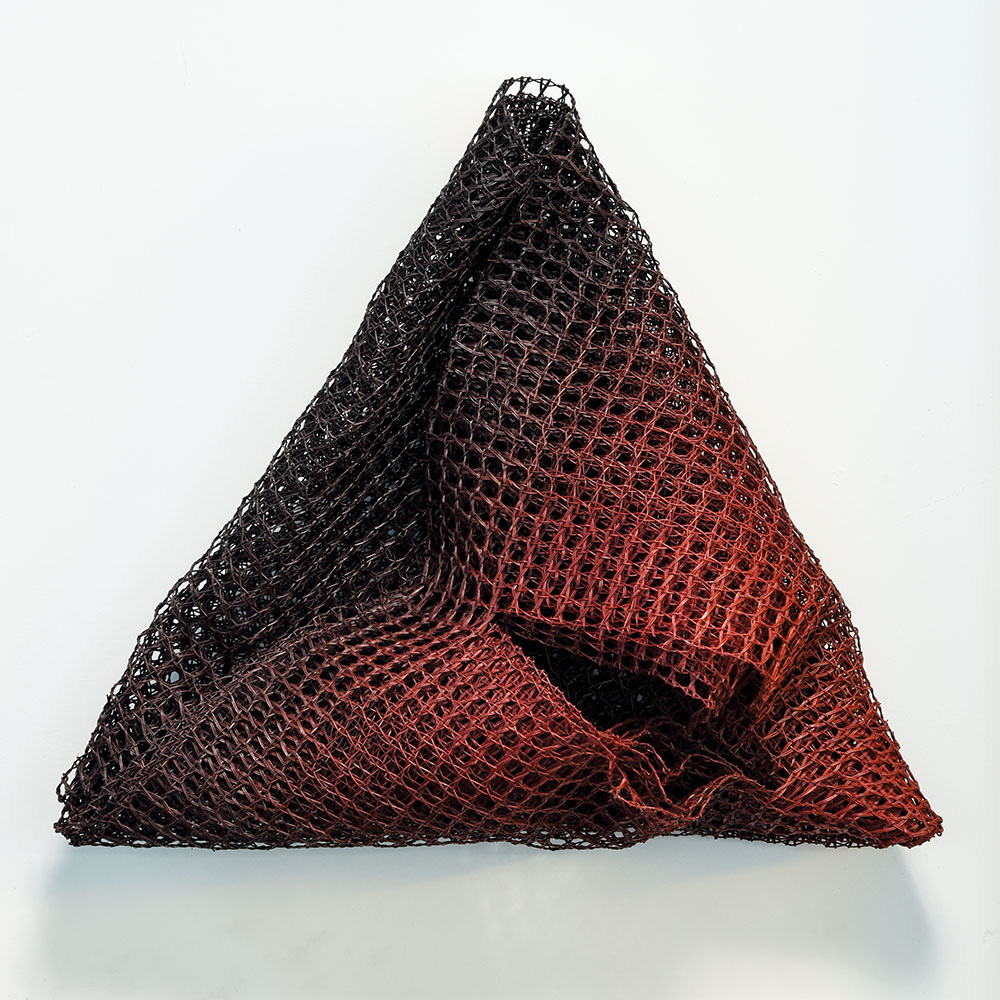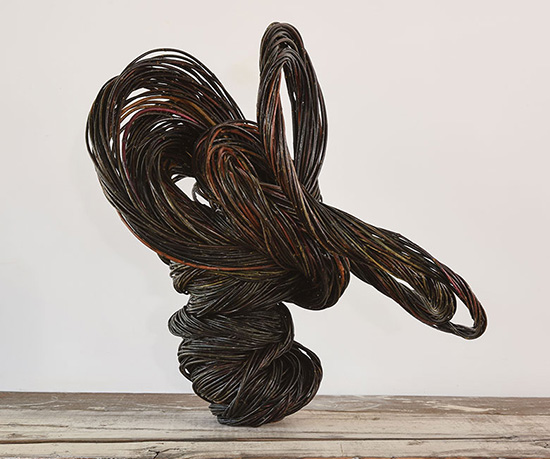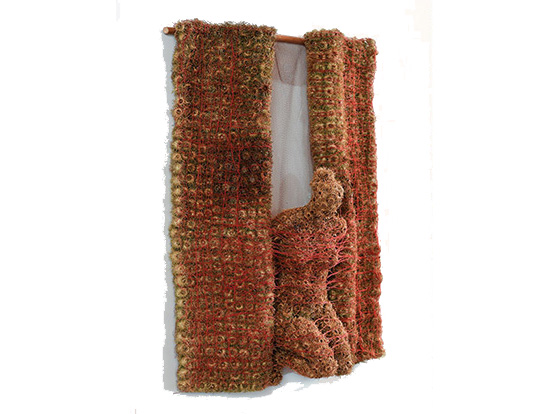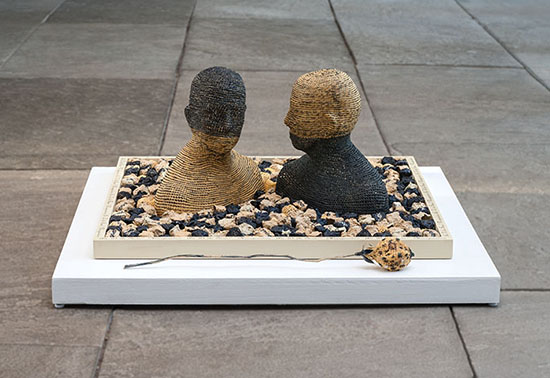2017 was a busy year for browngrotta arts! We featured more than 80 artists from Europe, Asia, North and South America and the UK in our celebratory 30th Anniversary exhibition Still Crazy After All These Years…30 Years in Art. Plunge: Explorations from Above and Below made quite the splash this summer at the New Bedford Art Museum. In addition to both exhibitions we also published our 42nd and 43rd catalogs: Still Crazy After All These Years…30 Years in Art and Plunge: Explorations from Above and Below, companion catalogs to both of our exhibitions.
We started off December’s New this Week with Susie Gillespie’s Worn. Gillespie’s work stems from her interest in archaeology and early textiles. Through her work, Gillespie strives to achieve a sense of earth, stone, vegetation and decomposition. In Worn, Gillespie uses handspun flax and linen to add a “clothiness“ that creates texture and life not possible with machine spun yarn. “If all creativity stems from dissatisfaction, maybe for me it is a dissatisfaction with the ugliness of that is modern, and the ruin of what I imagine once to have been beautiful,” explains Gillespie “…I look forward to a future where we do not discard things because they are worn out or outmoded. Out of decay and disintegration I wish to express a sense of renewal.”
Machine sewn with polyester mesh, Chang Yeonsoon’s multilayered Matrix III is eye catching and thought provoking. Matrix III, like other pieces from Yeonsoon’s Matrix series, “derives from the oriental perspective that observes the human mind and body as unified,” explains Yeonsoon. “These fiber artworks represent my own Korean formative language. In them, I minimize my body while my mind fills with abstract ideas.”
We ended 2017 with Lia Cook’s Pressed Variation Series. Bridging textiles and technology, Cook weaves digital images of cherubic faces or dolls using a jacquard loom, while also incorporating patterns taken from EEG and MRI brain scans over er subjects. While the scans themselves evoke textile-like patterns, Cook’s ability to wind a thread between technology and craft has led to world recognization of her innovations in fiber and textile arts.

